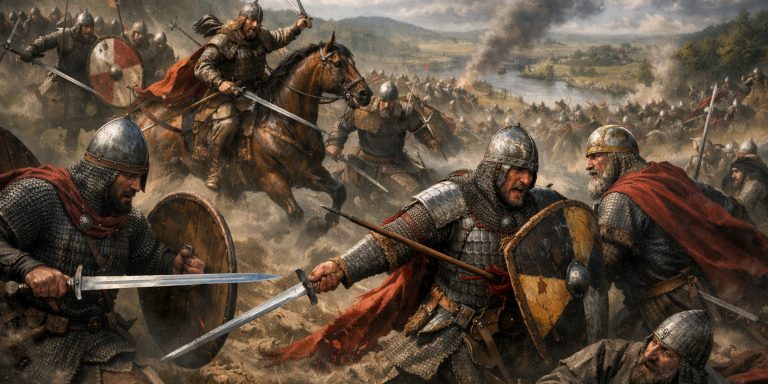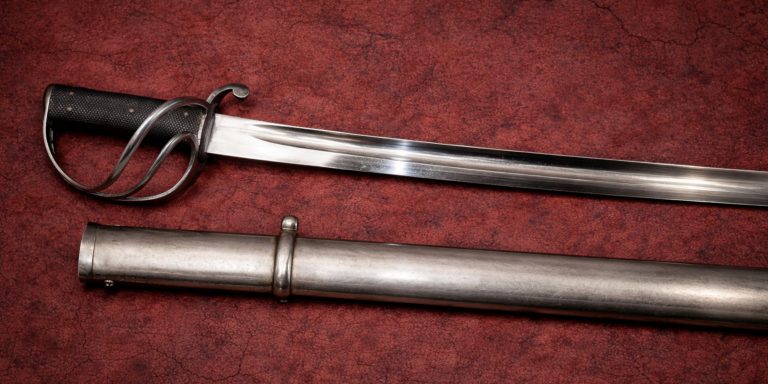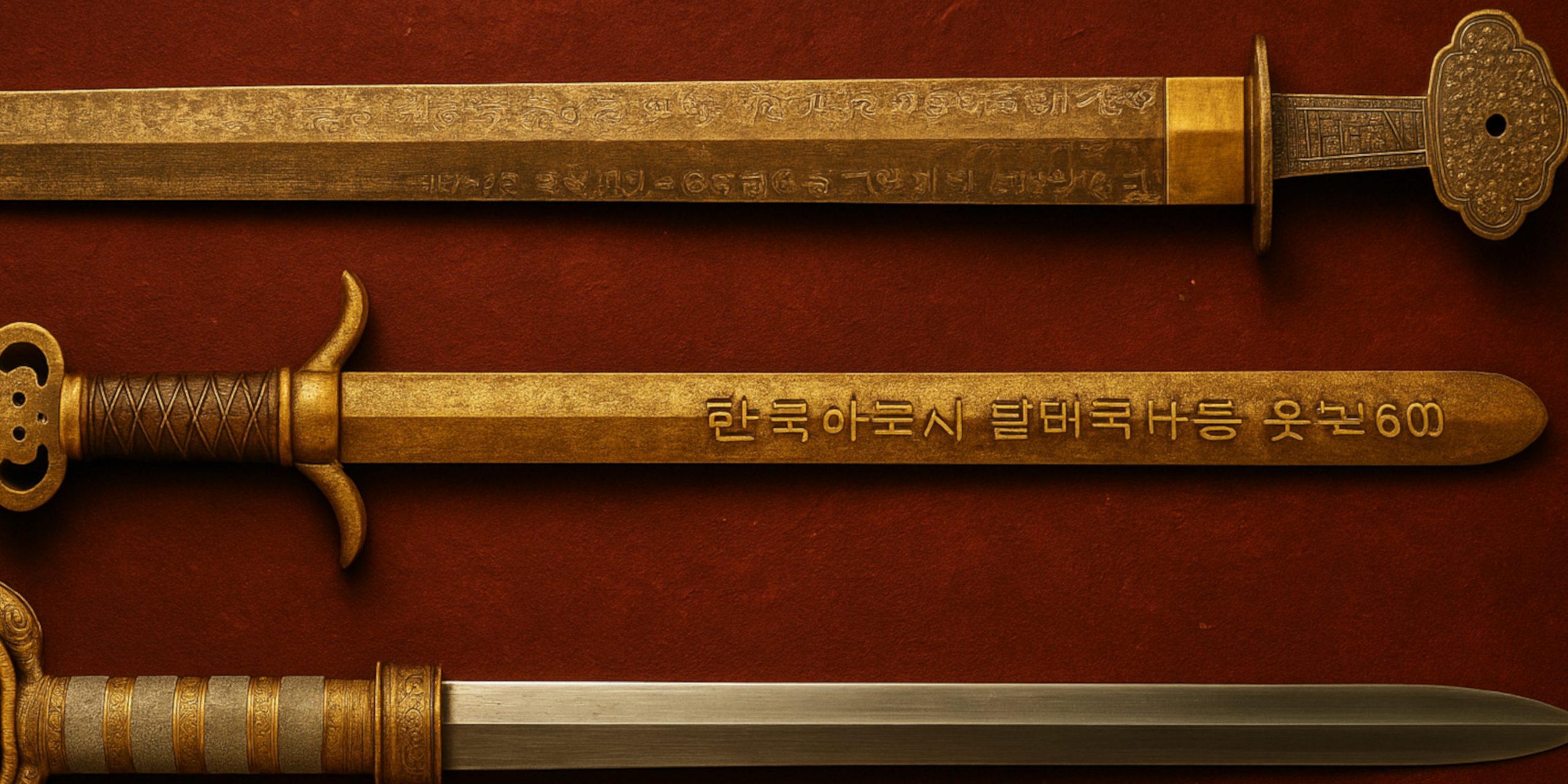
Korea’s sword-making tradition stretches back millennia, shaped by evolving warfare, metallurgy, and cultural exchange with neighbouring China and Japan. From early bronze blades to ornate court swords of the Joseon dynasty, Korean swords reflect both practicality and refinement. This article explores 100 types of Korean swords, grouped by historical era and development, while also tracing the shifts in military doctrine, smithing techniques, and symbolic meaning across centuries.
Era Overview: Bronze Age to Three Kingdoms (c. 1000 BCE – 668 CE)
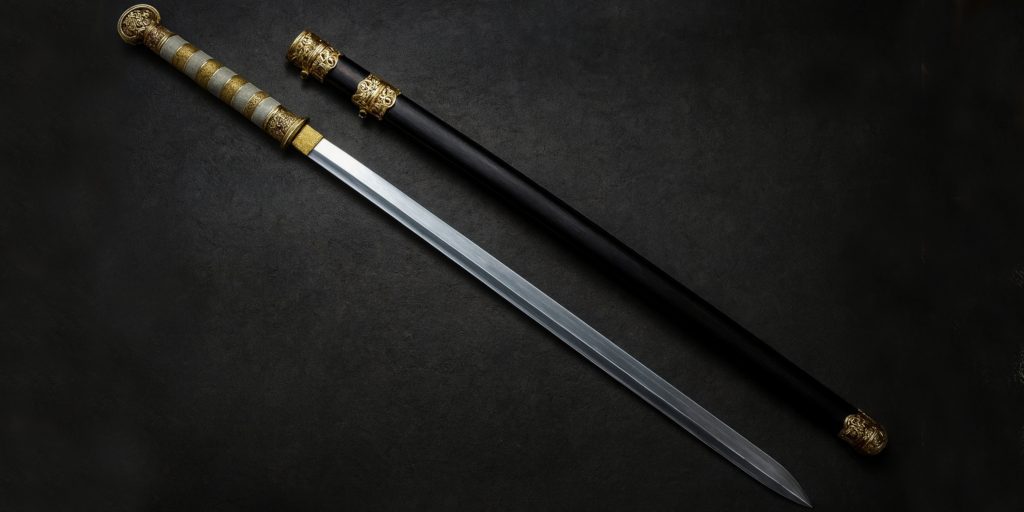
This period saw the earliest Korean blades, typically cast in bronze and used in both ritual and combat. As ironworking spread from China, Korean smiths began producing longer, more durable swords. By the time of the Three Kingdoms (Goguryeo, Baekje, and Silla), swords became integral to both military campaigns and elite display.
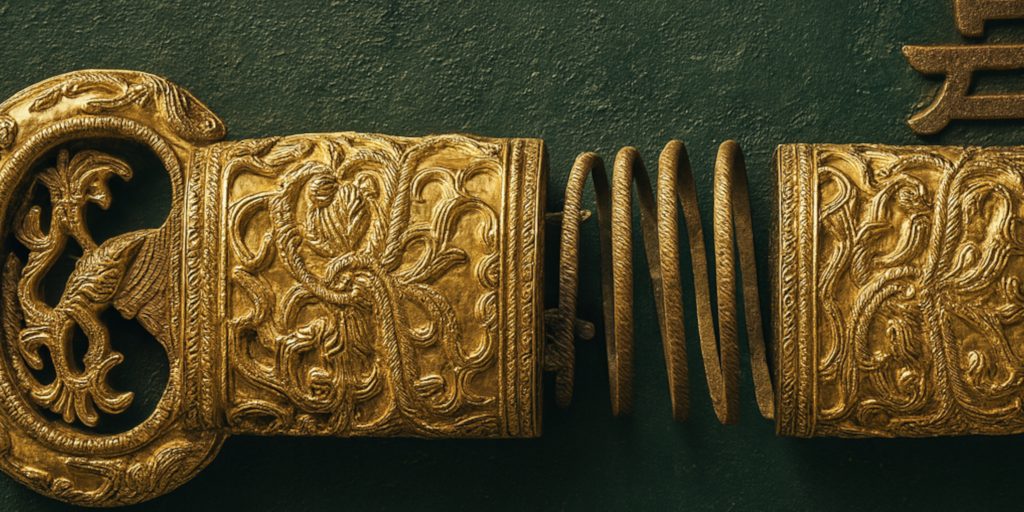
Key Innovations:
- Bronze casting and decorative pommels
- Introduction of iron forging
- Regional variation in crossguards and scabbards
- Strong Chinese influence in early forms
Swords (Bronze Age to Three Kingdoms):
- Bronze Dagger (단검)
- Liaoning-type Bronze Sword
- Ring-pommel Bronze Sword
- Gilt-bronze Sword of Baekje
- Straight Iron Sword (철검)
- Triangular Tang Iron Sword
- Ring-pommel Iron Sword
- Silla Royal Sword
- Curved Blade of Goguryeo Cavalry
- Long-bladed Baekje Sword
- Iron Shortsword of Gaya
- Double-edged Bronze Blade
- Inlaid Iron Sword
- Ceremonial Gilt Sword (금도검)
- Hwandudaedo (환두대도) – “Ring-pommel Sword”
- Wolbyeongdae (월병대) – crescent motif hilt
- Twin-ring Pommel Sword
- Gold-inlaid Cavalry Sword
- Baekje Iron Sabre
- Korean-Style Jian (based on Chinese design)
Era Overview: Unified Silla and Balhae (668–926)
The Silla unification of the peninsula brought a consolidation of sword types. Emphasis was placed on cavalry sabres, elegant detailing, and symbols of state power. Blades became more curved, with better steel tempering, influenced by Tang China and steppe warfare.
Key Innovations:
- Differential hardening techniques
- Curved blades for slashing cavalry use
- Advanced ornamentation in royal blades
- Emergence of standard military patterns
Swords (Unified Silla and Balhae):
- Unified Silla Ring-pommel Sword
- Balhae Cavalry Sword
- Silla Bronze-Scabbard Sabre
- Curved Iron Sword with Bone Grip
- Jade-inlaid Court Sword
- Long Iron Sabre with Ridge
- Ornamented Officer Sword
- Shallow-curved Silla Blade
- Tang-influenced Command Sword
- Gilt Ring-pommel with Phoenix Motif
- Balhae Curved Saber
- Silla Ceremonial Court Sabre
- Engraved Battle Sword
- Balhae Dual-purpose Blade
- Mounted Archer Sword
- Engraved Balhae Officer Sword
- Twin-edged Falchion Style
- Silver-lined Prestige Sword
- Curved Balhae Hunting Sword
- Royal Guard’s Ring-sword
Era Overview: Goryeo Dynasty (918–1392)
During the Goryeo period, sword-making diversified again. Blades were primarily curved and single-edged, suitable for mounted and infantry use. Mongol invasions brought further innovation, leading to sabres that were shorter and more manoeuvrable. Swordsmithing became professionalised, with workshops producing blades for military units.
Key Innovations:
- Shortened curved sabres
- Mass production of standard military blades
- Mongol and Song Chinese influence
- Introduction of straight ceremonial swords
Swords (Goryeo):
- Goryeo Curved Sword (고려도)
- Mongol-style Cavalry Sabre
- Goryeo Short Military Sword
- Iron Commander’s Sword
- Gilt Officer Sabre
- Straight Silver-inlaid Sword
- Mounted Sabre with Iron Scabbard
- Buddhist Ritual Sword
- Elite Guard’s Polished Blade
- Goryeo Officer’s Twin Sword Set
- Arming Sword with Bronze Pommel
- Embossed Flat-blade Sword
- Ritual Twin-curved Sword
- Reinforced Sabre with Ridgeback
- Iron Military-grade Blade
- Mounted Archer’s Side Sword
- Silverwork Ringed Hilt Sabre
- Dao-style Curved Goryeo Sword
- Ritual Blade for Temple Use
- Gold-engraved Military Officer Sword
Era Overview: Joseon Dynasty (1392–1897)

The Joseon era witnessed the refinement and codification of Korean sword use. Civil and military classes carried swords as signs of rank. The advent of manuals like the Muye Dobo Tongji formalised sword techniques. Blades were typically single-edged, curved, and highly standardised, with distinctions between military, ceremonial, and martial arts usage.
Key Innovations:
- Muye Dobo Tongji standardisation
- Ssangsudo and Hwandangdo forms
- Military-issue sabres (Byeongdo)
- Development of martial arts swords
- Use of high-carbon steel and differential quenching
Symbolic, Ritual, and Martial Blades of the Late Joseon
Key symbolic swords:
- Ingeom (인검) – “Sword of Man”: Representing human agency, this sword was believed to ward off evil when wielded with righteous intent. Often used in state rituals and Daoist practices.
- Samingeom (삼인검) – “Three Human Sword”: A powerful talismanic blade symbolising heaven, earth, and man. It was rarely used in battle but held spiritual significance in royal court ceremonies.
- Saingeom (사인검) – “Four Spirit Sword”: Inscribed with or representing the four directional guardian animals (Blue Dragon, White Tiger, Red Phoenix, Black Tortoise). Often associated with geomantic protection and elite Daoist rites.
These blades were not issued to soldiers but held within specific religious, courtly, or shamanic traditions. Their construction emphasised balance, fine engraving, and philosophical meaning over brute function.
Swords (Joseon):
- Hwando (환도) – Standard Joseon curved sabre
- Ssangsudo (쌍수도) – Two-handed battlefield sabre
- Ingeom (인검) – Ritual “sword of man” used to repel evil
- Samingeom (삼인검) – “Three human sword,” deeply spiritual and rare
- Saingeom (사인검) – “Four guardian sword” tied to geomantic traditions
- Byeongdo (병도) – Soldier’s military blade
- Janggeom (장검) – Long, double-handed formal sword
- Gyohaedo (교해도) – Blade used in coastal defence
- Chilseong-geom (칠검) – Seven-star sword used in temple rituals
- Muggeom (묵검) – Wooden sword for martial arts
- Hoemudo (회무도) – Parade sabre for officers
- Dangsangdo (당상도) – Military officer’s sabre
- Udo (우도) – Martial art sabre for drills
- Simgeom (심검) – Sword of meditation and spiritual focus
- Bonggeom (봉검) – Phoenix sword reserved for commanders
- Hoemudo (회무도) – Parade sabre
- Yeomdo (염도) – Flame pattern sabre
- Dojanggeom (도장검) – Sword used in sealing ceremonies
- Seunggwan Geom (승관검) – Civil servant’s blade
- Dangsangdo (당상도) – Officer’s issue sabre
- Silgeom (실검) – Practical-use blade
- Byeolun-Geom (별검) – Decorative side sword
- Wolgeom (월검) – Moon-pattern sabre
- Cheonggeom (청검) – Blue-decorated sabre
- Hyeopdo (협도) – Martial long sabre
- Baekgeom (백검) – White-blade formal sword
- Nambyeongdo (남병도) – Southern military blade
- Yonggeom (용검) – Imperial dragon sword
- Udo (우도) – Martial arts practice sabre
- Odo (오도) – Five-animal symbolic sword
- Gukgeom (국검) – National defence sword
- Bonggeom (봉검) – Phoenix sword for generals
- Giseokdo (기석도) – Parade-only sword
- Simgeom (심검) – Sword for spiritual training
- Yanggeom (양검) – Paired martial swords
- Sanggeom (상검) – Civilian court sword
- Seodo (서도) – Western-guard sabre
- Jeonggeom (정검) – Rectitude symbol sword
- Gwanchado (관차도) – Sword of office
- Cheoldo (철도) – Heavy steel blade for duelling
The Seven Swords Takeaway
Korean swords tell a layered story of metallurgy, martial discipline, and statecraft. Each period introduced shifts in design and purpose, from tribal rituals and military unification to codified martial arts and rank display. While often overshadowed by Chinese or Japanese blades in global discourse, Korean swords remain a distinct and important part of East Asian arms history.


